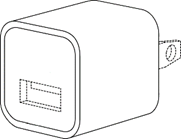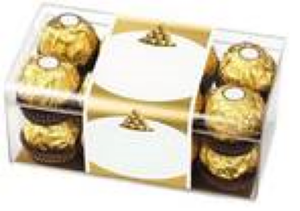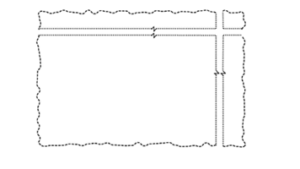Features
Nontraditional Trademarks in Canada: Lessons from Six Years of Applications
Published: June 18, 2025

Francois Larose Smart & Biggar LP Montreal, Canada Non-Traditional Marks Committee
Michelle Nelles Torys LLP Toronto, Canada Non-Traditional Marks Committee

Sarah O'Grady CPST Intellectual Property Inc. Toronto, Canada Non-Traditional Marks Committee
The breadth of trademark protection and registration has expanded over the years in Canada, most recently with the coming into force of major amendments to the Trademarks Act in 2019. Among those is the new defined term “sign.” A sign includes traditional marks, such as a word, a personal name, a design, a letter, a numeral or a figurative element, but also nontraditional marks, such as a three-dimensional shape, a color, a hologram, a moving image, a mode of packaging goods, a sound, a scent, a taste, a texture, and the positioning of a sign. This definition can be found in the Trademarks Act, R.S.C. (Revised Statutes of Canada), 1985, c. T-13, Section 2.
Since these amendments were implemented, applicants have been able to file applications for nontraditional trademarks, as well as for trademarks that consist of a combination of two or more types of traditional and/or nontraditional trademarks. There are specific application requirements for each type of nontraditional mark that should be adhered to in order to meet filing requirements. All of these requirements are outlined in the Canadian Trademarks Office’s Practice Notice on Non-traditional Trademarks, dated June 17, 2019. Where the trademark consists of a combination of two or more types of traditional and/or nontraditional trademarks, the application must meet the minimum requirements for each type of nontraditional mark.
Section 32 of the Trademarks Act adds a new obligation on applicants to file evidence of acquired distinctiveness at the filing date of the application, if so required by the Registrar, where the applied-for mark consists exclusively or primarily of one or more of these nontraditional marks (that is, a color per se, three-dimensional shape, mode of packaging goods, sound, scent, taste, texture, and any other prescribed sign) (Trademarks Act, R.S.C. 1985, c. T-13, Sect. 32(1)(c) and (d)).
Section 32 does not make it mandatory for the Registrar to request such evidence, but so far, the Registrar has generally made it a requirement in many of these cases. However, the Section does not list the following nontraditional marks and therefore they have escaped the evidentiary requirement: a hologram, a moving image, and the positioning of a sign. As for prescribed signs, there are none so far.
The Non-Traditional Marks Canada Subcommittee met with Canadian Intellectual Property Office (CIPO) officials in 2024 for an update regarding the filing and examination of nontraditional trademark applications now that the amendments have been in force for more than five years and such applications have been making their way through examination.
The CIPO officials advised the Subcommittee that dedicated and experienced examiners handle all nontraditional trademark applications. Applicants have filed more than 2,000 such applications, with around 300 having advanced through to registration at the time of the meeting. The predominant types of nontraditional trademarks filed are three-dimensional shapes, color per se, and the positioning of a sign.
Applicants have been able to file applications for nontraditional trademarks, as well as for trademarks that consist of a combination of two or more types of traditional and/or nontraditional trademarks.
CIPO officials also informed the Subcommittee that approximately 10 percent of the nontraditional trademark applications are Madrid Protocol applications extended to Canada through the World Intellectual Property Office (WIPO), and applicants should be aware of unique considerations that apply to these cases. Notably, the representation of the trademark in these applications cannot be altered to comply with Canadian requirements, and fewer types of nontraditional trademarks are available through WIPO, which means that extending an International Registration to Canada through WIPO may not always be the appropriate choice.
Further, CIPO officials confirmed that the Office systematically requires evidence of acquired distinctiveness for nontraditional trademarks listed in Section 32, and that if any such marks advanced to registration without having to prove acquired distinctiveness, it was probably by mistake.
Overall, the Subcommittee has observed that, in many instances, the type of mark applicants choose and ultimately register on the CIPO database is not necessarily correct (for example, an applicant, especially when not using a trademark agent, may mistakenly select a nontraditional type of trademark), which results in inaccurate numbers of nontraditional marks considered to have been filed and registered.
Sound
At the time of this writing, many sound marks have been filed with CIPO, with only one application, the KOODO mnemonic, having successfully advanced to registration after examination under the amended Trademarks Act.
Hologram
Holograms are three-dimensional pictures that can be a singular image or show different images when viewed from different angles. An application for a hologram must address the complexity of this type of mark, including still images to represent the holographic effect, and can also include a digital representation of the trademark in the form of a video clip showing the moving image of the hologram in its entirety. At the time of this writing, applications for hologram marks have been filed but only one, for the Holographic Blue Jay Design (TMA1223059), has successfully advanced to registration.
Moving Image (Motion)
In the past, moving image marks were considered unacceptable because they comprised a multiplicity of marks—although some purported moving image marks were registered, though as design marks (for example, the JAMES BOND moving image—TMA980395). Moving image marks are now officially registrable as long as the application includes a video clip showing the full range of the moving image, with or without additional accompanying static frame-by-frame images. At the time of this writing, many moving image marks have been filed with the CIPO, with a handful having successfully advanced to registration. For example, the GOOGLE logo motion sequence (TMA1104338):
Scent and Taste
At the time of this writing, applications have been filed for separate scent and taste trademarks, but CIPO has not approved or registered any of them.
In the past, moving image marks were considered unacceptable because they comprised a multiplicity of marks—although some purported moving image marks were registered, though as design marks.
Color Per Se
Color per se trademarks are marks that consist of a single color or a combination of colors without delineated contours. In this case, the color is the entirety of the mark as opposed to being merely a feature of the mark. At the time of this writing, many color per se marks have been filed with CIPO but only two have successfully advanced to registration, including one for the HORIZONTAL COLOR BLOCK registration (TMA1189050) of Deere & Company for the colors yellow and green:

Three-Dimensional Shapes
Three-dimensional shape applications are intended for products that have a unique and distinctive shape. At the time of this writing, many three-dimensional shape marks have been filed with CIPO after the coming into force of the amended Trademarks Act, with some having successfully advanced to registration—for example, the APPLE 5w USB Power Adapter Trade Dress trademark consisting of the three-dimensional configuration of an adapter (in the shape of a cube having four sides with rounded corners, a flat front, and flat back surface) owned by Apple Inc. (TMA1066319):

A Mode of Packaging Goods
Mode of packaging applications are intended for unique and distinctively shaped packaging for goods. At the time of this writing, many three-dimensional shape marks have been filed with CIPO after the amended Trademarks Act came into force, with a few having successfully advanced to registration—for example, the 3D BOX DESIGN trademark consisting of a transparent rectangular box with a label wrapped around the center of the box with 16 individually wrapped confections owned by FERRERO S.P.A. (TMA1106725):

Where the sign is positioned on a three-dimensional object, the representation of the mark can include the three-dimensional object in dashed lines to show the positioning but does not form part of the mark itself.
Texture
At the time of this writing, applications have been filed for texture trademarks but only one has successfully advanced to registration for the texture of a card design trademark consisting of frayed cardstock texture applied to the edges of a card for jewelry (TMA1192334):

The Positioning of a Sign
Brands can file an application for a positioning of a sign where the trademark consists of a sign as it is positioned on a two-dimensional or three-dimensional product or packaging. Where the sign is positioned on a three-dimensional object, the representation of the mark can include the three-dimensional object in dashed lines to show the positioning but does not form part of the mark itself.
At the time of this writing, many marks for the positioning of signs have been filed with CIPO, and many have successfully advanced to registration, notably without any requirement for evidence of acquired distinctiveness—for example, the Blue Box and Ribbon Design registration for the positioning of the colors robin’s egg blue and white as applied to the three-dimensional box and ribbon of Tiffany and Company (TMA1091005):

Clearly, nontraditional trademarks provide trademark owners with the opportunity to protect a wide range of what makes a brand distinctive. As trademark owners and CIPO become more accustomed to applications for nontraditional trademarks, the practice of securing registration for these types of trademarks is expected to evolve.
Author’s Insight: The Subcommittee has been monitoring the filing and advancement of nontraditional trademark applications in what it terms the NTM Tracker. The Subcommittee hopes to make the NTM Tracker available as an INTA Resource. Comments and observations are provided below regarding the different types of nontraditional trademarks.
Although every effort has been made to verify the accuracy of this article, readers are urged to check independently on matters of specific concern or interest.
© 2025 International Trademark Association